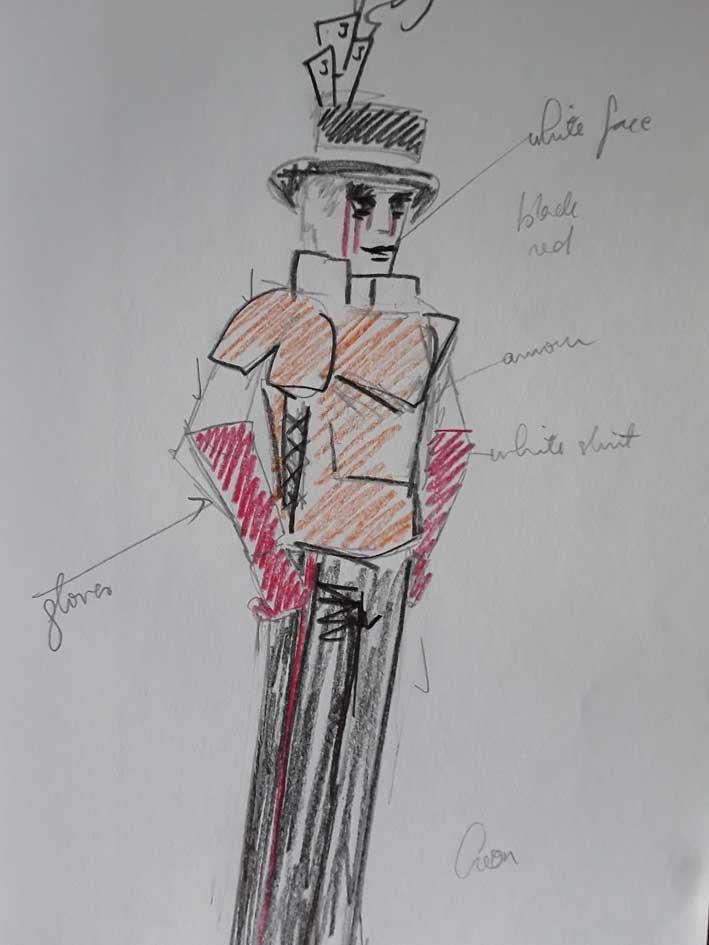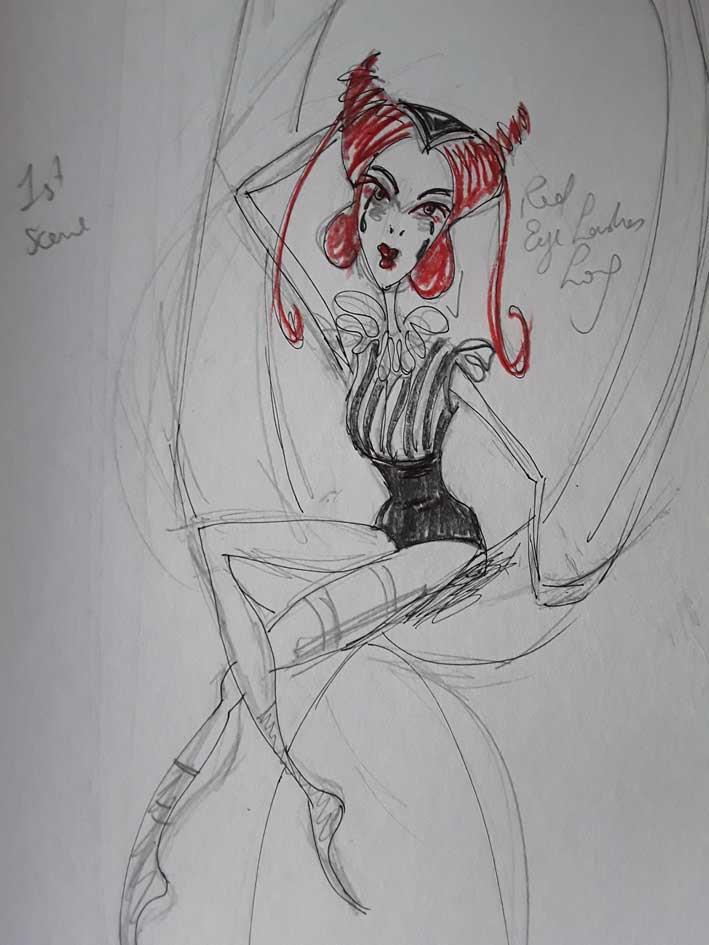Antigone is a story that explores the themes of civil disobedience, rebellion, love for family, loyalty and natural law through the tale of a woman who defies her uncle, King Creon of Thebes, and publically mourns her brother, who has been labelled a traitor. The story is as timeless as the themes it explores, and in the 1940s was adapted by Jean Anouilh, who astutely defied the Nazis with its staging at the Théâtre de l'Atelier in Paris.
Anouilh's main shift from the original script by the ancient Greek tragedian, Sophocles, which was written in 441BC, is that of blurring the line between good and evil. Even so, an intimate knowledge of the script will reveal another important detail: that of destiny, which turns the characters into 'caged animals' that cannot escape their fate.
Through that, the idea of staging Antigone in a Victorian circus was born.

The stage - Adrian Mamo
"Antigone explores an internal conflict between obedience to authority and being true to one's convictions. The story remains unchanged, but initial discussions with the director centred on coming up with an alternative setting to the Greek tragedy that would still offer an opportunity to create an environment where power could be exercised by the characters over each other.
"This led us to consider various scenarios including, for example, a prisoner-of-war camp, but we finally decided on a travelling (Victorian) circus, which could be seen to encapsulate a world in itself. My inspiration for the final look of the set came from two books: 'The Greatest Shows on Earth - A History of the Circus' by Linda Simon and 'The Steampunk Bible' by Jeff Vandermeer.
"The process of set design involved a thorough reading of the script and then brainstorming sessions with the director and the other creatives (lighting, costumes, hair and make-up) to establish the identity of the new (circus) characters assuming the roles of the dramatis personae - the ringmaster, acrobats, clowns, and the lot - and their newly-created setting in order to establish what visual mood was needed and what scenic elements were necessary.
"The stage set hopes to conjure up a colourful-yet-dark, behind-the scenes setting of the thrills and magic of a circus environment, with mise-en-scène moments that have to be witnessed to be appreciated."

The costumes - Angele Galea
"While researching the Steampunk look [a subgenre of science fiction that blends the aesthetics and technology of 19th-century industry], as well as the fashion of the late 1980s and early 1990s, I came up with designs that were based on a meeting point between these different styles, which is very reminiscent of the Commedia dell'arte [an early form of professional theatre which used costumes to help audiences understand the role each character played].
"In Anouilh's version of Antigone, we get the sense that the protagonists are stuck in their destiny and that it is harder to know who is 'good' and who is 'evil'. It's for this reason that I wanted to flatten the characters against the background and give them an almost two-dimensional quality...
"To do this, I used the same colour scheme for the clothes that Adrian used for the scenery (mostly red and yellow). To the red - I dropped most of the yellow - I added black and white for a chiaroscuro effect to help highlight the characters on stage... Even so, I did not want to have colours clashing and wanted the lack of depth emulating the late Impressionist paintings with the vibrant red background as in Gauguin's Vision After the (1888). I then added touches of metal to pick up details.
"Not everything has been created from scratch, however, and most of the clothes were sourced from the wardrobes at the Manoel Theatre and More or Less Theatre, and were then embellished by myself and Dorothy from the Manoel to give them the desired look. There were items, especially accessories like fans and parasols, that did need to be crafted, and I do think they will be quite eye-catching on stage!"
The headpieces - Chris Galea
"In order to achieve the right style of hair, one has to study the costume and set designs of the production. Moreover, the hair varies from character to character and so some headpieces are more complicated than others. For example, Antigone's character was originally going to have dark red hair with a smooth finish in a horn-like shape. However, once I started working on the wig, and after studying the character, I decided to go for a rougher and curly finish to show her rebellion against the status quo and her uncle, King Creon. I then included some plaits with brown hair in order to help define the wig.
"However, as often occurs in theatre, the wig being shown in the photo will not be the one worn on the nights at the theatre. This is due to the fact that the direction demands that the character of Antigone performs certain circus moves on stage and, therefore, the wig has to adapt to this purpose. The final one is smaller with incorporated combs to prevent it for falling off.
"Even so, the wigs and hair have been inspired by a mix of Victorian and Steampunk influences, so you can expect volume in both hairstyles and headpieces; and curls and back-combing will be included in abundance."
The lighting - Moritz Zavan Stoeckle
"To me, Antigone is a tragedy about a community of individuals, but even though there are so many shared emotions, I see distance between the characters; a distance dictated by the rules of society. This is why the idea is to use strong directional lighting, various angles, and a myriad of colour temperatures to illuminate the different characters in different ways. This will be possible only when the actors aren't moving much, though, as when they do I will have to use more open light cues.
"The actual light design takes life during the plotting sessions of production week, however, so for now it's all ideas based on the script, the costumes, the directions and, of course, the set. Even so, I liked the contrast between the very colourful dresses and circus tents that came across from the pictures of Victorian circuses and Steampunk, the colourful hair, and the black-and-white tones of the very strong make-up give the whole thing the impression of a dark, sad and grey world surrounded by a colourful environment.
"Apart from looking at visual stimuli, when I am working on the development of a light design I need to attend the rehearsals in order to start having a clearer image of the effects I want to create. It was, in fact, during a rehearsal in January that I started to truly 'see' how I wanted the different scenes to look. So, if you really want to know the end of this process, you will need to come and watch the performance!"
Funded by the Malta Arts Fund, Antigone will be on at Teatru Manoel between Friday 2 and Sunday 4 February. For more information or to buy tickets, please visit www.teatrumanoel.com.mt